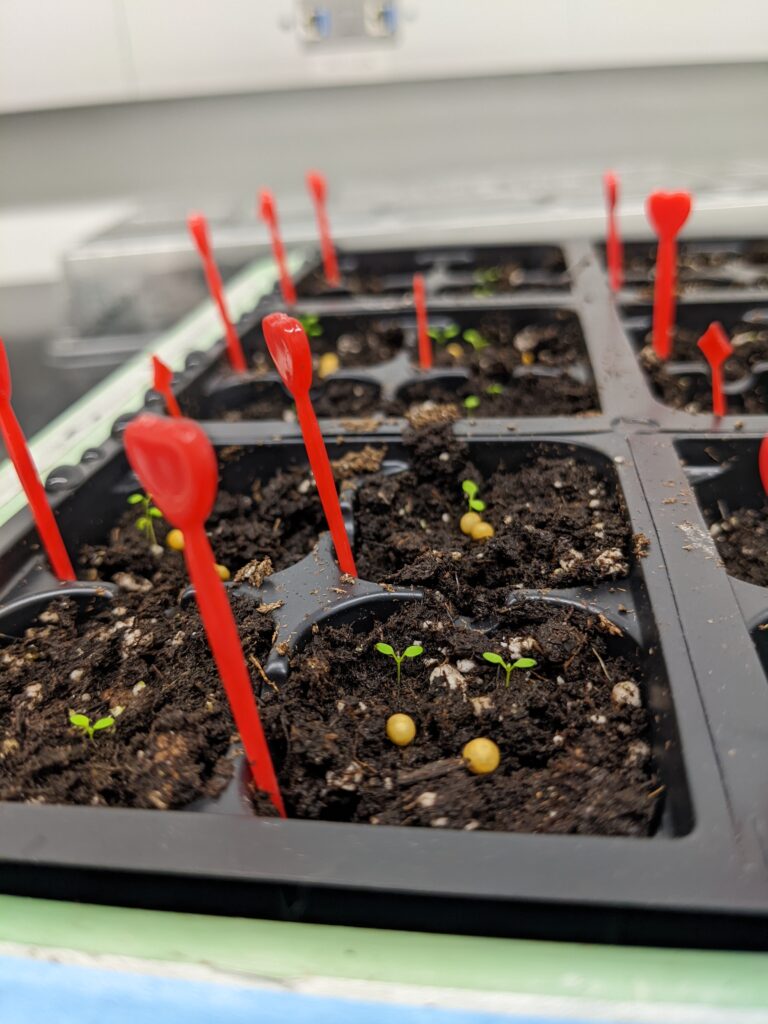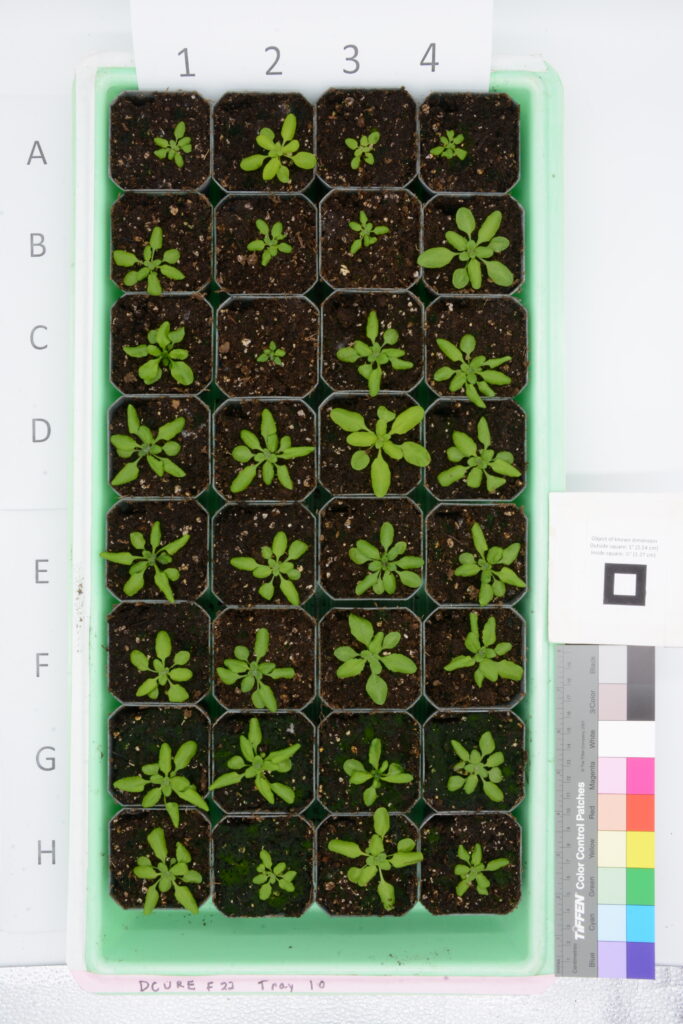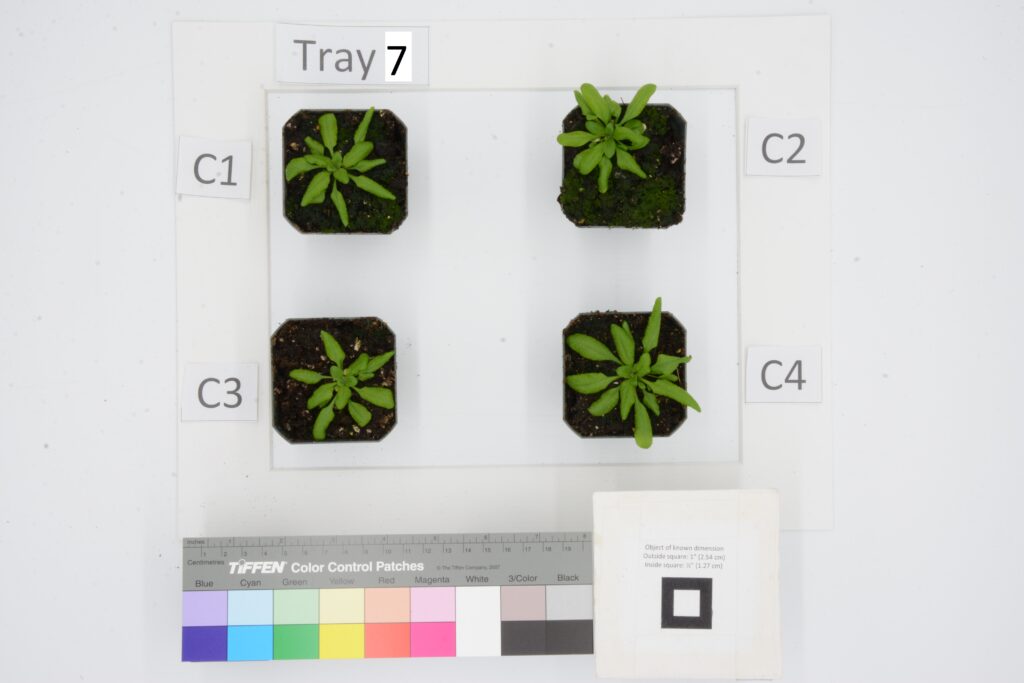In order to discover the functions of genes, Arabidopsis T-DNA Insertion lines can be used to efficiently screen for mutations cost effectively. Agrobacterium tumefaciens T-DNA is inserted into the Arabidopsis genome, creating mutant strains called knockouts. The T-DNA transformed plants are then grown and its genomic DNA sequenced. The insertions contain known DNA information that can be easily mapped to determine its location. The database containing information on insertion sites and mutant seed stocks can be found at http://signal.salk.edu/tabout.html.
Arabidopsis knockouts can be systematically grown and examined for a wide variety of traits to understand how disrupting a targeted gene affects phenotypic traits. Multiple genes can affect a single phenotype and environmental conditions may alter how genes behave. Traits associated with fitness may include characters that affect survival, growth rates, life cycle timing, reproductive output, and plant architecture. These characters are typically influenced by many genes, and consequently many knockouts may alter these phenotypes. Discovering links between genes and phenotypes in Arabidopsis may ultimately pave the way for studies in other plants, including agricultural species, where genes related to traits such as yield, drought tolerance, and plasticity are crucial for sustainable and resilient global food production.



